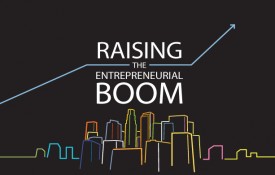In 2020, American individuals, foundations, and corporations donated $471.44 billion—representing the highest year of giving on record. Viewed another way, the United States’ line item for charitable deductions is roughly the size of Israel’s entire GDP (the 30th largest GDP in the world). The 2021 data won’t be available until later this year, but by all estimates the numbers are on track to be pretty similar.
Over a century ago, U.S. federal regulations created charitable deductions for individuals, and in 1935 the benefit extended to corporations. The justification for the policy centered around the social good created by these grants. The entirety of the determination for the benefit is tied to the tax status of the beneficiary at the time the gift is made. There is absolutely no government oversight related to the societal value or impact of the gift.
Let me be clear. Nonprofits serve a critical role, are by and large led and staffed by dedicated and qualified professionals, and provide significant benefit for communities. That notwithstanding, this is a colossal subsidy to be allocating when coupled with such limited oversight and accountability.
What are these dollars meant to accomplish?

Image courtesy: Shutterstock.
COVID-19 rocked our society. Student learning loss is immense, and costly wraparound support services will be needed to help this generation get back on academic track. Hunger and food insecurity is on the rise, as is housing insecurity. Our community fabric has frayed—mental health needs, suicides, and incidents of drug abuse are all increasing at an alarming clip. We need scientists and researchers to find breakthroughs in health care, climate resilience, and sustainability, just to name a few key areas. Parents across this country are pleading for a more tolerant and equitable society to raise their kids. According to the United Nations, at the end of 2020 there were 82.4 million refugees, a 2x growth compared to 2010. This number does not account for recent events in Afghanistan and Ukraine.
There is so much work to do. Leading foundations and donors have heard the call, leveled up giving in the last year, and called on others to do the same
While many funders are stepping up like never before, something more radical is required: We don’t just need “more,” we need “more” + “better.” A regulatory solution is extremely unlikely, and would be a slow political nightmare.
It’s also not necessary.
The better, more viable and valuable solution? Donors, particularly those making substantial cash contributions, must follow through to assess the impact of their giving.
Unfortunately, that’s not always happening. A 2018 study showed that 78% of wealthy donors did not monitor or evaluate the impact of their charitable giving. We know that many corporate-giving models similarly lack the critical follow-up mechanisms to ensure these donations are truly moving the needle.
We must do better.

Image courtesy: Shutterstock.
Cutting the check is the first step. Major donors, whether corporations, foundations or individuals, must be partners in excellence.
Here’s what to do next.
- Craft clear, mutually agreed-upon deliverables and related KPIs:. Determine a schedule for regular communication and reporting. Reports can be very simple, and may even be supplemented by photos or a quick low-production video.
- Track, track, track, and then track again: What isn’t measured isn’t managed. If you need help getting started, there are a number of grant-tracking systems that can help, including our system, Ethos Tracking.
- Stay closely connected with grantees: If you are a major funding partner, build a relationship with that organization. An annual report won’t tell you if a gift is working. Personal relationships are critical.
- If an effort is falling short, partner with the nonprofit team to help the project get back on track: Every taxpayer underwrote your gift. While there is no IRS requirement to do so, ensuring a gift provides its intended value is the reason you got that deduction.
- Identify opportunities not only to support an issue with funds, but also with your time, expertise, know-how, and partnership. The more embedded a donor is with a nonprofit partner, the more likely that the work will be impactful.
- Share best practices and successes to help set the bar: Nobody has time to reinvent the wheel. If you and your partners have developed effective grant management systems share them with colleagues and other funders in your network.
Unprecedented generosity is an incredible thing. Now, we need our most generous donors and corporate partners to dig in and make sure that these deductions are creating the value we are all counting on. The good news this tax day is that our itemizations are freshly tabulated—so everyone will know exactly where to start.
Emily Kane Miller is founder and CEO of Ethos Giving, a social impact services firm. She also serves as a scholar in residence at The Brittingham Social Enterprise Lab at the University of Southern California’s Marshall School of Business.














































